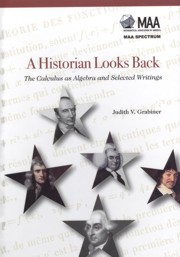Book contents
- Frontmatter
- Contents
- Introduction
- Part I The Calculus as Algebra
- Preface to the Garland Edition
- Acknowledgements
- Introduction
- 1 The Development of Lagrange's Ideas on the Calculus: 1754–1797
- 2 The Algebraic Background of the Theory of Analytic Functions
- 3 The Contents of the Fonctions Analytiques
- 4 From Proof-Technique to Definition: The Pre-History of Delta-Epsilon Methods
- Conclusion
- Appendix
- Bibliography
- Part II Selected Writings
- Index
- About the Author
2 - The Algebraic Background of the Theory of Analytic Functions
from Part I - The Calculus as Algebra
- Frontmatter
- Contents
- Introduction
- Part I The Calculus as Algebra
- Preface to the Garland Edition
- Acknowledgements
- Introduction
- 1 The Development of Lagrange's Ideas on the Calculus: 1754–1797
- 2 The Algebraic Background of the Theory of Analytic Functions
- 3 The Contents of the Fonctions Analytiques
- 4 From Proof-Technique to Definition: The Pre-History of Delta-Epsilon Methods
- Conclusion
- Appendix
- Bibliography
- Part II Selected Writings
- Index
- About the Author
Summary
Introduction
The Théorie des fonctions analytiques of Joseph-Louis Lagrange has always appeared puzzling to historians of the calculus. Viewing the work from the point of view of the history of the concepts of the calculus, historians have had difficulty in understanding why Lagrange should have begun with the assertion that all functions had Taylor series; they have attributed it to a formalist tendency. Looking at Lagrange's definition of the nth derivative as the nth coefficient in the Taylor series multiplied by n!, it has been hard to see why the work commanded any attention at all since it defines a relatively simple concept by means of a complex one; it is puzzling that a man of Lagrange's stature should have so trivially begged the question. Finally, it has not been explained why, in this apparently formalist work, Lagrange gave the first expressions for the remainder term of the Taylor series. The book seems to be outside the main stream of development in the story of the foundations of the calculus, and its major achievements—an algebra of power series and the first expression for the remainder term in the Taylor series—seem unrelated to each other as well as to that main stream.
One may ask whether viewing the Fonctions analytiques from the standpoint afforded by the history of algebra would shed any light on the structure of the work or on the historical antecedents of its lasting achievements. Since eighteenth-century algebra and calculus share a common interest in infinite series and approximations, and since the work itself is avowedly an attempt to reduce the calculus to algebra, the question is a natural one.
- Type
- Chapter
- Information
- A Historian Looks BackThe Calculus as Algebra and Selected Writings, pp. 37 - 62Publisher: Mathematical Association of AmericaPrint publication year: 2010



